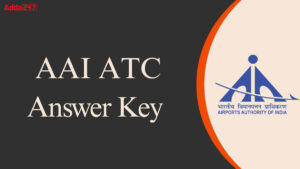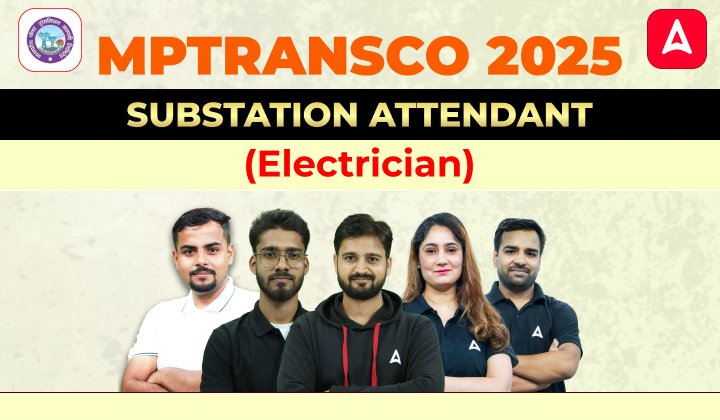Table of Contents
UPPSC Polytechnic Lecturer Exam Preparation Civil Engineering Most Expected Questions. The UPPSC Polytechnic Lecturer Exam is to be conducted on 22nd December 2021. UPPSC Polytechnic Lecturer Exam 2021 is conducted to recruit lecturers for Government polytechnic Colleges in UP for Technical Subjects. Hence the majority of questions in the exam are from respective technical domains but there are a few questions from GENERAL HINDI and GENERAL KNOWLEDGE part also to check one’s general communication skills understanding of the society. Generally, Aspirants don’t find any difficulty in the preparation of the technical part of the examination. So, for the help of aspirants, we are providing the Most Expected Questions with solutions of Civil Engineering for UPPSC Polytechnic Lecturer Recruitment 2021. This is exclusively provided by ADDA247 to all the UPPSC Polytechnic Lecturer Recruitment 2021 for FREE!!
Also Check, UPPSC Technical Lecturer Exam Pattern
UPPSC Polytechnic Lecturer Civil Engineering Most Expected Questions
Q26. The mortar used for masonry construction are classified based on strength in IS
2250 and IS 1905 according to their designations The correct sequence of increasing
order of their strength is
(a)
(b)
(c)
(d)
Q27. The process of adding the cement in order to improve the quality of mortar is
known as ________.
(a) Gauging
(b) Slaking
(c) Reinforcing
(d) Ripening
Q28. Which type of rock is used for roofing?
(a) Slate
(b) Overburnt brick
(c) Basalt
(d) Granite
Q29. The subclassification of sedimentary rocks
(a) Volcanic and plutonic
(b) Mechanical, chemical, organic
(c) Intrusive, extrusive
(d) Stratified, unstratified
Q30. Consider the following statements:
kiln seasoning of timber results in:
(a) Reduced density
(b) Reduced life of timber
(c) Provide dimensional stability
Which of these statements is/are correct?
(a) a, b and c
(b) only a
(c) b and c
(d) a and c
Q31. In the cross-section of a timber, cambium layer can occur in
(a) inner bark and sap wood
(b) Pith and Heart wood
(c) Sap wood and Heart wood
(d) Outer bark and sap wood
Q32. Match List – I with List II and select the correct answer using the codes given the
lists:
List – I List – II
A. Deciduous 1. Soft wood
B. Conifer 2. Hard wood
C. Endogenous 3. Eucalyptus
D. Exogenous 4. Bamboo
Codes:
A B C D
(a) 1 2 3 4
(b) 2 1 3 4
(c) 2 1 4 3
(d) 1 2 4 3
Q33. According to IS 10262:1982, what should be the compressive strength of OPC of
grade C?
(a) 42.5 to 46.5 MPa
(b) 47.5 to 52.5 MPa
(c) 32.5 to 37.5 MPa
(d) 37.5 to 42.5 MPa
Q34. The four cross – section shown below are required to be ordered in the increasing
order of their respective shape factor
Which of the following order is correct?
(a) iii, I, iv, ii
(b) i, ii, iii, iv
(c) ii, iv, iii, i
(d) iv, ii, iii, i
Q35. The permissible stresses for main structural steel members under dynamic loads
should be increased by
(a) 33.33%
(b) 40%
(c) 25%
(d) 30%
Q36. For the fillet weld of size ‘S’ shown in the adjoining figure the effective throat
thickness is
(a) 0.61 S
(b) 0.62 S
(c) 0.64 S
(d) 0.65 S
Q37. The diameter of a rivet connecting plate of thickness 16 mm given by Unwin’s
formula is_________:
(a) 28 mm
(b) 23 mm
(c) 24 mm
(d) None of these
Q38. For an I-beam the shape factor is 1.12. the factor of safety in bending is 1.5. if the
allowable stress is increased by 20% for wind and earthquake loads, then the load
factor is
(a) 1.40
(b) 1.25
(c) 1.20
(d) 1.15
Q39. For maximum sagging bending moment at support in a continuous RC beam, live
load should be placed on
(a) spans adjacent to the support plus alternate spans
(b) al the spans except the spans adjacent to the support
(c) spans next to the adjacent spans of the support plus alternate spans
(d) spans adjacent to supports only
Q40. A reinforced cantilever beam of span 4 m, has a cross -section of 150 mm × 500
mm. if checked for lateral stability and deflection, the beam will
(a) fail in deflection only
(b) fail in lateral stability only
(c) fail in both deflection and lateral stability
(d) satisfy the requirements of deflection and lateral stability
Q41. A doubly reinforcement beams are provided:
1. when depth of the section is restricted.
2. To reduce deflection of beam.
3. To reduce torsional moment.
Which of the above statement is correct?
(a) Statement 3 only
(b) Statement 2 only
(c) Statement 1, 2 and 3 only
(d) Statement 1 only
Q42. The development length in compression for a 20 mm diameter deformed bar of
grade Fe 415 embedded in concrete of grade M 25 whose design bond stress is 1.40
N/mm², is
(a) 1489 mm
(b) 1289 mm
(c) 806 mm
(d) 645 mm
Q43. Spacing between lateral ties of RCC columns should not exceed:
(a) 150 mm
(b) 250 mm
(c) 300 mm
(d) 500 mm
Q44. According to working stress method, the limiting value of permissible tensile stresses
for a reinforced concrete member in tension for HYSD of grade Fe415 is:
(a) 190
(b) 230
(c) 250
(d) 415
Q45. Partial safety factors for concrete and steel respectively may be taken as:
(a) 1.5 and 1.15
(b) 1.5 and 1.78
(c) 3 and 1.78
(d) 3 and 1.2
L1Difficulty 1
Q46. A short column 300 mm × 300 mm is reinforced with 4 bars of 20 mm dia. (Fe-415
grade). If concrete is M-20 grade, the max. axial load allowed on it is:
(a) 1059.0
(b) 1159.0
(c) 1173.0
(d) None of these
Q47. While checking shear resistance of reinforced concrete beams for limit state of
collapse as per IS: 456, which one of the following nominal shear stress
recommendations is the be adhered to? ( is shear force at vertical cross-sectional, ‘b’
and ‘d’ are overall breadth and effective depth of beam respectively)
(a)
(b)
(c)
(d)
Q48. For the plane frame as shown in the figure, the degree of kinematic indeterminacy
neglecting axial deformation,
(a) 3
(b) 5
(c) 7
(d) 9
Q49. If a point load acting at the mid span of a fixed beam of uniform section produces
fixed end moment of 60 kNm, then same load spread uniformly over the entire span will
produce fixed end moments equal to:
(a) 20 kNm
(b) 30 kNm
(c) 40 kNm
(d) 45 kNm
Q50. The number of plastic hinges which will cause the overall total collapse of a
structure is:
(a) one more than the order of statically indeterminacy
(b) equal to order of statically indeterminacy
(c) one less than the order of statically indeterminacy
(d) non determinable
Q51. Influence lines usually represent the effect of which load among the following, only
at a specified point on structural member?
(a) Concentrated load
(b) Uniformly distributed load
(c) Uniformly varying load
(d) moving load
Q52. Match List-I with List-II and select the correct answer using the given below the
lists.
List-I List-II
A. Talus a. Soil transported by wind
B. Till b. Soil transported by gravity
C. Loess c. Soil transported by glaciers
D. Lacustrine d. Soil deposited in lake bed deposit
(a) A-a, B-c, C-b, D-d
(b) A-b, B-c, C-a, D-d
(c) A-a, B-b, C-d, D-c
(d) A-c, B-b, C-d, D-a
Q53. Consider the following statements in the context of aeoline soil.
A. The soil has low density and low compressibility.
B. The soil is deposited by wind.
C. The soil has low permeability.
Which of these statements are correct?
(a) All three
(b) Only B and C
(c) Only A and B
(d) Only A and C
Q54. Rise of water able in cohesionless soils up to ground surface. Reduces the net
ultimate bearing capacity approximately by
(a) 25%
(b) 50%
(c) 75%
(d) 90%
Q55. A soil has bulk density of 17.6 KN/m³ and water content 10%. if void ratio remains
constant then the bulk density for water content of 20% will be
(a) 16.13 KN/m³
(b) 19.20 KN/m³
(c) 19.36 KN/m³
(d) 17.6 KN/m³
Q56. A fully saturated soil has a water content of 200 percent. If G = 2.6, the void ratio
is:
(a) 1.3
(b) 2.6
(c) 5.2
(d) None of these above
Q57. A moist sample of soil weight 24 grams in a tin lid. The tin lid above weight 14
grams. The over dry weight of tin and sample is 22 grams. What is the water content of
the soil?
(a) 15.5%
(b) 39.5%
(c) 25%
(d) 60%
Q58. A given soil sample has the following given size analysis
<2.00mm-80% <0.66mm-60%
<0.075mm-30% <0.002mm-2%
<0.005mm-10%
(a) skip graded
(b) uniformly graded
(c) well graded
(d) average graded
Q59. A soil has a discharge velocity of 6 × m/s and void ratio of 0.5. What is its
seepage velocity?
(a) 3 × m/s
(b) 6 × m/s
(c) 12 × m/s
(d) 18 × m/s
Q60. For better strength and stability, what are the coarse grained and fine-grained soils
respectively compacted as?
(a) dry of OMC and wet of OMC
(b) wet of OMC and wet of OMC
(c) Wet of OMC and dry of OMC
(d) dry of OMC and dry of OMC
Q61. The void ratio pressure diagram is shown in the given figure. The coefficient of
compressibility is:
(a) 0.0050 m²/t
(b) 0.073 m²/t
(c) 0.20 m²/t
(d) 0.25 m²/t
Q62. Force F in the given figure equals to
(a) kN
(b) 2 kN
(c) – kN
(d) 3 kN
Q63. A cross – sectional bar of area 700 mm² is subjected to an axial load as shown in
the figure below what is the value of stress (MPa) in the section QR
(a) 30
(b) 40
(c) 50
(d) 60
Q64. Consider a bar of length l and tapering uniformly from diameter to and subjected
to axial load W. the extension of the bar will be
(a)
(b)
(c)
(d)
L1Difficulty 1
Q65. In two-dimensional stress strain analysis, the shear strain component along the xy
plane is written as ___.
(a)
(b)
(c)
(d)
Q66. Which formula CORRECTLY depicts the elongation in a composite body?
(a)
(b)
(c)
(d)
Q67. Which of the curve is best suited for linear elastic – perfectly plastic material?
(a)
(b)
(c)
(d)
Q68. The value of principal stress at a point in a plane stressed element is
Calculate the value of normal stress acting (MPa) at the angle of 45° at X axis.
(a) 250
(b) 500
(c) 750
(d) 1000
Q69. The magnitude of the normal stresses in the x and y direction is 100 MPa and 20
MPa respectively. both the stresses and tensile in nature. Determine the radius of the
Mohr’s circle (mm).
(a) 20
(b) 40
(c) 60
(d) 80
Q70. The bending moment diagram for a simply supported beam with a load at the mid-
span is a
(a) parabola
(b) hyperbola
(c) rectangle
(d) triangle
Q71. Consider the flowing statements:
1. On Planes having maximum and minimum principal stresses, there will be no normal stress.
2. Shear stresses on mutually perpendicular planes is numerically equal.
3. Maximum shear stress is equal to half the sum of the maximum and minimum principal stresses
Which of these statements is/are correct?
(a) 1 only
(b) 1 and 2
(c) 2 and 3
(d) 1 and 3
Q72. Which of the following statements are correct?
1. All load carrying members transmit load through basic modes of tension, compression,
torsion, and shear only.
2. Beams carry transverse load.
3. Combined loading is a complicated loading.
4. Nature of internal forces decide the aspect of combined loading
(a) 1 and 2
(b) 2 and 3
(c) 3 and 4
(d) 2 and 4
Q73. Which one of the following statements is correct?
(a) Maximum longitudinal reinforcement in an axially loaded short column is 6% of gross
sectional area
(b) Columns with circular section are provided with transverse reinforcement of helical
type only
(c) Spacing of lateral ties cannot be more than 16 times the diameter of the tie bar
(d) Longitudinal reinforcement bar need not be in contact with lateral ties.
Q74. Activity ‘C’ follows activity ‘A’ and activity ‘D’ follows activities ‘A’ and ‘B’. the
correct network for the projects is
(a)
(b)
(c)
(d)
Q75. Consider the following features/factors:
1. Projects are of the non-repetitive type
2. Time required need not be known
3. Time required is known precisely
4. Events have been established for planning
5. Emphasis is given to activities of project
PERT is preferred for planning because of
(a) 1, 2 and 4
(b) 3, 4 and 5
(c) 1, 3 and 4
(d) 1, 2 and 5
Q76. For a given activity, the optimistic time, pessimistic time and the most probable
estimates are 5, 17 and 8 days respectively. The expected time is
(a) 8 days
(b) 9 days
(c) 10 days
(d) 15 days
Q77. As per I.R.C. the super elevation to be provided in horizontal curves of radius R is
given by: –
(a)
(b)
(c)
(d)
Where V is the speed in km/h
Q78. What is the mechanical widening required for a pavement of width 7m on a
horizontal curve of radius 490m, if the longest wheel base of vehicle expected on the
road is 7.0m?
(a) 0.07 m
(b) 0.05 m
(c) 0.49m
(d) 0.1m
Q79. Assuming the safe stopping sight distance to be 80m on a flat highway section
and with a setback distance of 10m. what would be the radius of the negotiable
horizontal curve?
(a) 800 m
(b) 160 m
(c) 80 m
(d) 70 m
Q80. The ruling gradient in a hill road is 6% and a horizontal curve is provided for a
radius of 75 metres. The compensated gradient of the road will be
(a) 3%
(b) 4%
(c) 5%
(d) 6%
Q81. If L is length of vehicles in meters, C is the clear distance between two
consecutive vehicles (stopping sight distance), V is the speed of vehicles in km per
hour, the maximum number N of vehicles/hours is …………
(a)
(b)
(c)
(d)
Q82. If the jam density on a road designed for a free mean speed is 75 km/h is 100
vehicles/km, then the capacity flow will be:
(a) 1500
(b) 1875
(c) 2250
(d) 2760
Q83. California bearing ratio (CBR)
(a) is a measure of soil strength
(b) is a procedure for designing flexible pavements
(c) is a method of soil identification
(d) is a measure to indicate the relative strength of paving materials
Q84. The following test are conducted on the coarse aggregates for Road construction:
(a) Impact test, shape test and penetration test
(b) CBR value, Ductility test, Crushing test
(c) Bitumen Adhesion test, abrasion test
(d) Permeability test, crushing test, Viscosity test
Q85. The table below shows marshal mix design criteria for bituminous concrete.
Identify the correct specified value for the test property.
Test property Specified value
P) Marshall stability, 1) 75 to 85
Q) Flow value, 0.25 mm
units
2) 340 (minimum)
R) Air voids in total mix % 3) 3 to 5/3
S) Void filled with bitumen,
VFB%
4) 8 to 16/8
(a) P-1, Q-2, R-3, S-4
(b) P-2, Q-4, R-3, S-1
(c) P-4, Q-2, R-1, S-3
(d) P-3, Q-1, c-R, S-2
Q87. Find the number of sleepers required for 1280 m long B.G. track. Take sleeper
density (M +5) and length of rail as 12.8 m. (terms have their usual meaning)
(a) 1800
(b) 1000
(c) 1200
(d) 1500
Q88. The optimum depth of Kor watering for rice crop is
(a) 25.0 cm
(b) 23.0 cm
(c) 19.0 cm
(d) 13.5 cm
Q89. The intensity of irrigation for Kharif is 45% and that for Rabi is 60% then annual
intensity or irrigation is
(a) 60%
(b) 100%
(c) 105%
(d) None of the above
Q90. The maximum irrigation requirement of rice crop is exhibited its
(a) Maximum delta value
(b) Maximum duty value
(c) Minimum duty value
(d) None of the above
Q91. One of the benefits of lining water canals for irrigation is that, it:
(a) Helps increase the command area
(b) Increases potential chances of beaching
(c) Increases channel cross section
(d) Increases seepage of water
Q92. The length of a survey line when measured with a chain of 20 m nominal length
was found to be 840.5 m. If the chain used is 0.1 m too long, the correct length of the
measured line is:
(a) 844.7 m
(b) 845.7 m
(c) 846.7 m
(d) 847.7 m
Q93. In case of a direct Vernier scale–
(a) Smallest division is longer than smallest division of the main scale 1.
(b) Graduations increase in the same direction in which graduations of the main scale
increases
(c) Graduations increase in opposite direction in which graduations of the main scale
increase
(d) None of these
Q94. Match List-I (Corrections) with List-II (Name) and select the correct answer using
the codes given below the lists.
List-I
A.
B.
C.
D.
List-II
1. Pull correction
2. Sag correction
3. Temperature correction
4. Mean sea level correction
Codes
(a) A-4, B-1, C-3, D-2
(b) A-1, B-4, C-3, D-2
(c) A-3, B-2, C-1, D-4
(d) A-2, B-3, C-1, D-4
Q95. The magnetic bearing of a line is 50°30’ ad the magnetic declination is 4°30’ East.
The true bearing of a line will be
(a) 45°
(b) 50°
(c) 60°
(d) 55°
Q96. The following bearing were observed while traversing with a compass, which
stations are affected by local attraction?
Line F.B. B.B.
AB 104°30’ 284°30’
BC 48°15’ 226°0’
CD 290°30’ 115°15’
DA 180°15’ 357°15’
(a) C and D
(b) A and D
(c) A and B
(d) B and C
Q97. The difference between face left and face right observation of a theodolite is 3’.
The error is
(a) 3’
(b) 1°30”
(c) 45”
(d) 0’
Q98. Consider the following statements:
Reciprocal levelling eliminates the effect of
1. errors due to atmospheric refraction
2. errors due to earth’s curvature
3. errors due to line of collimation
4. mistake in taking levelling staff readings
Which of these statements are correct?
(a) 2, 3 and 4
(b) 1, 3 and 4
(c) 1, 2 and 3
(d) 1, 2 and 4
Q99. Calculate the reduced level (m) of a point A, if the staff reading at point A and
Benchmark are 2.9 m and 2.6 m respectively. The reduced level of the benchmark is
100 m.
(a) 97.22
(b) 100.3
(c) 105.3
(d) 99.7
Q100. Calculate the curvature correction (in m.) if distance between the instrument and
staff is 1000 m.
(a) –0.0785
(b) 0.0785
(c) –0.0673
(d) 0.0673
Q101. The sequent depth ratio of a hydraulic jump in a rectangular channel is 16.48.
what is the Froude number (approximate) at the beginning of the jump?
(a) 9.0
(b) 12.0
(c) 5.0
(d) 8.0
Q102. Match List – I with List – II and select the correct answer using the code given
below the lists:
List – I
A. Sudden closure of a sluice gate
B. Hydraulic jump in a stilling basin
C. Spreading of irrigation water in a field
D. Flow in a main irrigation canal
List- II
1. Uniform flow
2. Rapidly varied flow
3. Unsteady flow
4. Spatially varied flow
Code:
A B C D
(a) 1 2 4 3
(b) 3 2 4 1
(c) 1 4 2 3
(d) 3 4 2 1
Q103. A rectangular channel carries a uniform flow with a Froude number of 2.83. The
ration of critical depth to normal depth of the flow is:
(a) 1.68
(b) 2.83
(c) 2.00
(d) 4.75
Q104. For a hydraulically efficient rectangular channel of bed width 5m, the hydraulic
radius is equal to.
(a) 2.5 m
(b) 1.25 m
(c) 5 m
(d) 2 m
Q105. The working principle of Impulse turbines is
(a) Newton’s first law
(b) Newton’s second law
(c) Newton’s third law
(d) Conservation of mass
Q106. The velocity of wheel ‘u’ in Pelton wheel is
(a)
(b)
(c)
(d)
Q107. Which of the following is not correctly matched?
(a) Francis Turbine Impulse Turbine
(b) Pelton Turbine Impulse Turbine
(c) Kaplan Turbine Reaction Turbine
(d) Francis Turbine Reaction Turbine
Q108. Hydraulic grade line as compared to the Centre line of conduct ____________.
(a) Should be always above
(b) Should be always below
(c) Should always be parallel
(d) May be above or below
Q109. A cubical block of wood of 1 m side and density 500 kg/m³ floats in sea water of
density 1000 kg/m³. the depth of immersion of the block is:
(a) 23 cm
(b) 0.5 m
(c) 1 m
(d) 0.625 m
Q110. A 20 m high dam is filled with\water up to the top. The force acting on the vertical
dam wall (20 m high × 25 m. wide) is given as (consider density of water = 1000 kg/m³.
g = acceleration due to gravity):
(a) 1000 KN
(b) 25,000 N
(c) 5g MN
(d) 50,000/g KN
Q111. An object weighs 60 gm in air, 50 gm in water and 40 gm in oil. Then the specific
gravity of the oil will be __________.
(a) 0.25
(b) 1
(c) 1.5
(d) 2
Q112. A block of ice floating over water in a vessel slowly melts in it. The water level in
the vessel will
(a) start rising
(b) start falling
(c) will remain constant
(d) will depend on temperature of water
Q113. The flow in venturi flume takes place at
(a) atmospheric pressure
(b) at pressure greater than atmospheric pressure
(c) vacuum
(d) high pressure
Q114. Crude oil of kinematic viscosity 2.25 stokes flows through a 20 cm diameter pipe,
the rate of flow being 1.5 litres/s. the flow will be-
(a) Uncertain
(b) Laminar
(c) Turbulent
(d) Transition
Q115. A rectangular channel 3m wide is laid on a slope of 0.0002. When the depth of
flow in the channel is 1.5 m what is the average boundary shear stress (nearly)?
(a) 0.3 N/m²
(b) 0.15 N/m²
(c) 3.0 N/m²
(d) 1.5 N/m²
Q116. The population of a city in the year 2000 was 82,200. If average percent increase
in population per decade is 35%, the population of the city in the year 2020 estimated
geometrical increase will nearly be
(a) 1,45,810
(b) 1,48,810
(c) 1,49,810
(d) 1,50,810
Q117. Match List-I (Water quality) with List-II (Method of determination) and select the
correct answer:
List-I
A. Hardness
B. D.O.
C. Chloride
D. Chlorine
List-II
1. EDTA Method
2. Orthotodoline test
3. Mohr method
4. Winkler’s method
Codes:
(a) A-1, B-4, C-3, D-2
(b) A-1, B-4, C-2, D-3
(c) A-4, B-1, C-3, D-2
(d) A-1, B-4, C-2, D-3
Q118. The various treatment process in a water treatment plant are listed below:
1. Chlorination
2. Filtration
3. Flocculation
4. Coagulation
5. Sedimentation
The correct sequence of these processes in water treatment is
(a) 1, 2, 3, 4, 5
(b) 4, 3, 5, 2, 1
(c) 1, 2, 5, 3, 4
(d) 4, 5, 3, 1, 2
Q119. Chlorine usage in the treatment of 25000 m³/day of water has been 9 kg/day.
The residual chlorine after 10 minutes contact is 0.2 mg/l. The chlorine demand of water
would be nearly
(a) 0.12 mg/l
(b) 0.16 mg/l
(c) 0.22 mg/l
(d) 0.28 mg/l
Q120. The unit in which both sedimentation and digestion processes of sludge take
place simultaneously is called:
(a) Skimming tank
(b) Detritus tank
(c) Imhoff tank
(d) Digestion tank
Q121. Pollutant standards index (PSI) value in between 101-199 denotes the air quality
as ______
(a) Good
(b) Moderate
(c) Unhealthy
(d) Hazardous
Q122. Which one of the following is the correct statement?
A heterotroph is an organism that obtains
(a) Its cell carbon as well as its energy from organic matter.
(b) Its energy from a natural Ecosystem.
(c) Its cell carbon from an inorganic source.
(d) Its energy from the oxidation of simple inorganic compounds.
Q123. The average surface area of a reservoir in the month of June is 20 km². In the
same month, the average rate of inflow is 10 m³/s. outflow rate is 15 m³/s, monthly
rainfall is 10 cm, monthly seepage loss is 1.8 cm and the storage change is 16 million
m³. The evaporation (in cm) in that month is
(a) 46.8
(b) 136.0
(c) 13.6
(d) 23.4
Q124. A 3-hour storm on a small drainage basin produced rainfall intensities of 3.5
cm/hr, 4.2 cm/hr and 2.9 cm/hr in successive hours. If the surface runoff due to the
storm is 3 cm, then the value of will be
(a) 2.212 cm/hr
(b) 2.331 cm/hr
(c) 2.412 cm/hr
(d) 2.533 cm/hr
Q125. The type of rain-gauge commonly used in India for measuring rainfall is given by:
(a) weighing bucket type rain-gauge
(b) tipping bucket type rain-gauge
(c) floating type rain-gauge
(d) Simon’s rain-gauge
Q26. The mortar used for masonry construction are classified based on strength in IS
2250 and IS 1905 according to their designations The correct sequence of increasing
order of their strength is
(a)
(b)
(c)
(d)
Q27. The process of adding the cement in order to improve the quality of mortar is
known as ________.
(a) Gauging
(b) Slaking
(c) Reinforcing
(d) Ripening
Q28. Which type of rock is used for roofing?
(a) Slate
(b) Overburnt brick
(c) Basalt
(d) Granite
Q29. The subclassification of sedimentary rocks
(a) Volcanic and plutonic
(b) Mechanical, chemical, organic
(c) Intrusive, extrusive
(d) Stratified, unstratified
Q30. Consider the following statements:
kiln seasoning of timber results in:
(a) Reduced density
(b) Reduced life of timber
(c) Provide dimensional stability
Which of these statements is/are correct?
(a) a, b and c
(b) only a
(c) b and c
(d) a and c
Q31. In the cross-section of a timber, cambium layer can occur in
(a) inner bark and sap wood
(b) Pith and Heart wood
(c) Sap wood and Heart wood
(d) Outer bark and sap wood
Q32. Match List – I with List II and select the correct answer using the codes given the
lists:
List – I List – II
A. Deciduous 1. Soft wood
B. Conifer 2. Hard wood
C. Endogenous 3. Eucalyptus
D. Exogenous 4. Bamboo
Codes:
A B C D
(a) 1 2 3 4
(b) 2 1 3 4
(c) 2 1 4 3
(d) 1 2 4 3
Q33. According to IS 10262:1982, what should be the compressive strength of OPC of
grade C?
(a) 42.5 to 46.5 MPa
(b) 47.5 to 52.5 MPa
(c) 32.5 to 37.5 MPa
(d) 37.5 to 42.5 MPa
Q34. The four cross – section shown below are required to be ordered in the increasing
order of their respective shape factor
Which of the following order is correct?
(a) iii, I, iv, ii
(b) i, ii, iii, iv
(c) ii, iv, iii, i
(d) iv, ii, iii, i
Q35. The permissible stresses for main structural steel members under dynamic loads
should be increased by
(a) 33.33%
(b) 40%
(c) 25%
(d) 30%
Q36. For the fillet weld of size ‘S’ shown in the adjoining figure the effective throat
thickness is
(a) 0.61 S
(b) 0.62 S
(c) 0.64 S
(d) 0.65 S
Q37. The diameter of a rivet connecting plate of thickness 16 mm given by Unwin’s
formula is_________:
(a) 28 mm
(b) 23 mm
(c) 24 mm
(d) None of these
Q38. For an I-beam the shape factor is 1.12. the factor of safety in bending is 1.5. if the
allowable stress is increased by 20% for wind and earthquake loads, then the load
factor is
(a) 1.40
(b) 1.25
(c) 1.20
(d) 1.15
Q39. For maximum sagging bending moment at support in a continuous RC beam, live
load should be placed on
(a) spans adjacent to the support plus alternate spans
(b) al the spans except the spans adjacent to the support
(c) spans next to the adjacent spans of the support plus alternate spans
(d) spans adjacent to supports only
Q40. A reinforced cantilever beam of span 4 m, has a cross -section of 150 mm × 500
mm. if checked for lateral stability and deflection, the beam will
(a) fail in deflection only
(b) fail in lateral stability only
(c) fail in both deflection and lateral stability
(d) satisfy the requirements of deflection and lateral stability
Q41. A doubly reinforcement beams are provided:
1. when depth of the section is restricted.
2. To reduce deflection of beam.
3. To reduce torsional moment.
Which of the above statement is correct?
(a) Statement 3 only
(b) Statement 2 only
(c) Statement 1, 2 and 3 only
(d) Statement 1 only
Q42. The development length in compression for a 20 mm diameter deformed bar of
grade Fe 415 embedded in concrete of grade M 25 whose design bond stress is 1.40
N/mm², is
(a) 1489 mm
(b) 1289 mm
(c) 806 mm
(d) 645 mm
Q43. Spacing between lateral ties of RCC columns should not exceed:
(a) 150 mm
(b) 250 mm
(c) 300 mm
(d) 500 mm
Q44. According to working stress method, the limiting value of permissible tensile stresses
for a reinforced concrete member in tension for HYSD of grade Fe415 is:
(a) 190
(b) 230
(c) 250
(d) 415
Q45. Partial safety factors for concrete and steel respectively may be taken as:
(a) 1.5 and 1.15
(b) 1.5 and 1.78
(c) 3 and 1.78
(d) 3 and 1.2
L1Difficulty 1
Q46. A short column 300 mm × 300 mm is reinforced with 4 bars of 20 mm dia. (Fe-415
grade). If concrete is M-20 grade, the max. axial load allowed on it is:
(a) 1059.0
(b) 1159.0
(c) 1173.0
(d) None of these
Q47. While checking shear resistance of reinforced concrete beams for limit state of
collapse as per IS: 456, which one of the following nominal shear stress
recommendations is the be adhered to? ( is shear force at vertical cross-sectional, ‘b’
and ‘d’ are overall breadth and effective depth of beam respectively)
(a)
(b)
(c)
(d)
Q48. For the plane frame as shown in the figure, the degree of kinematic indeterminacy
neglecting axial deformation,
(a) 3
(b) 5
(c) 7
(d) 9
Q49. If a point load acting at the mid span of a fixed beam of uniform section produces
fixed end moment of 60 kNm, then same load spread uniformly over the entire span will
produce fixed end moments equal to:
(a) 20 kNm
(b) 30 kNm
(c) 40 kNm
(d) 45 kNm
Q50. The number of plastic hinges which will cause the overall total collapse of a
structure is:
(a) one more than the order of statically indeterminacy
(b) equal to order of statically indeterminacy
(c) one less than the order of statically indeterminacy
(d) non determinable
Q51. Influence lines usually represent the effect of which load among the following, only
at a specified point on structural member?
(a) Concentrated load
(b) Uniformly distributed load
(c) Uniformly varying load
(d) moving load
Q52. Match List-I with List-II and select the correct answer using the given below the
lists.
List-I List-II
A. Talus a. Soil transported by wind
B. Till b. Soil transported by gravity
C. Loess c. Soil transported by glaciers
D. Lacustrine d. Soil deposited in lake bed deposit
(a) A-a, B-c, C-b, D-d
(b) A-b, B-c, C-a, D-d
(c) A-a, B-b, C-d, D-c
(d) A-c, B-b, C-d, D-a
Q53. Consider the following statements in the context of aeoline soil.
A. The soil has low density and low compressibility.
B. The soil is deposited by wind.
C. The soil has low permeability.
Which of these statements are correct?
(a) All three
(b) Only B and C
(c) Only A and B
(d) Only A and C
Q54. Rise of water able in cohesionless soils up to ground surface. Reduces the net
ultimate bearing capacity approximately by
(a) 25%
(b) 50%
(c) 75%
(d) 90%
Q55. A soil has bulk density of 17.6 KN/m³ and water content 10%. if void ratio remains
constant then the bulk density for water content of 20% will be
(a) 16.13 KN/m³
(b) 19.20 KN/m³
(c) 19.36 KN/m³
(d) 17.6 KN/m³
Q56. A fully saturated soil has a water content of 200 percent. If G = 2.6, the void ratio
is:
(a) 1.3
(b) 2.6
(c) 5.2
(d) None of these above
Q57. A moist sample of soil weight 24 grams in a tin lid. The tin lid above weight 14
grams. The over dry weight of tin and sample is 22 grams. What is the water content of
the soil?
(a) 15.5%
(b) 39.5%
(c) 25%
(d) 60%
Q58. A given soil sample has the following given size analysis
<2.00mm-80% <0.66mm-60%
<0.075mm-30% <0.002mm-2%
<0.005mm-10%
(a) skip graded
(b) uniformly graded
(c) well graded
(d) average graded
Q59. A soil has a discharge velocity of 6 × m/s and void ratio of 0.5. What is its
seepage velocity?
(a) 3 × m/s
(b) 6 × m/s
(c) 12 × m/s
(d) 18 × m/s
Q60. For better strength and stability, what are the coarse grained and fine-grained soils
respectively compacted as?
(a) dry of OMC and wet of OMC
(b) wet of OMC and wet of OMC
(c) Wet of OMC and dry of OMC
(d) dry of OMC and dry of OMC
Q61. The void ratio pressure diagram is shown in the given figure. The coefficient of
compressibility is:
(a) 0.0050 m²/t
(b) 0.073 m²/t
(c) 0.20 m²/t
(d) 0.25 m²/t
Q62. Force F in the given figure equals to
(a) kN
(b) 2 kN
(c) – kN
(d) 3 kN
Q63. A cross – sectional bar of area 700 mm² is subjected to an axial load as shown in
the figure below what is the value of stress (MPa) in the section QR
(a) 30
(b) 40
(c) 50
(d) 60
Q64. Consider a bar of length l and tapering uniformly from diameter to and subjected
to axial load W. the extension of the bar will be
(a)
(b)
(c)
(d)
L1Difficulty 1
Q65. In two-dimensional stress strain analysis, the shear strain component along the xy
plane is written as ___.
(a)
(b)
(c)
(d)
Q66. Which formula CORRECTLY depicts the elongation in a composite body?
(a)
(b)
(c)
(d)
Q67. Which of the curve is best suited for linear elastic – perfectly plastic material?
(a)
(b)
(c)
(d)
Q68. The value of principal stress at a point in a plane stressed element is
Calculate the value of normal stress acting (MPa) at the angle of 45° at X axis.
(a) 250
(b) 500
(c) 750
(d) 1000
Q69. The magnitude of the normal stresses in the x and y direction is 100 MPa and 20
MPa respectively. both the stresses and tensile in nature. Determine the radius of the
Mohr’s circle (mm).
(a) 20
(b) 40
(c) 60
(d) 80
Q70. The bending moment diagram for a simply supported beam with a load at the mid-
span is a
(a) parabola
(b) hyperbola
(c) rectangle
(d) triangle
Q71. Consider the flowing statements:
1. On Planes having maximum and minimum principal stresses, there will be no normal stress.
2. Shear stresses on mutually perpendicular planes is numerically equal.
3. Maximum shear stress is equal to half the sum of the maximum and minimum principal stresses
Which of these statements is/are correct?
(a) 1 only
(b) 1 and 2
(c) 2 and 3
(d) 1 and 3
Q72. Which of the following statements are correct?
1. All load carrying members transmit load through basic modes of tension, compression,
torsion, and shear only.
2. Beams carry transverse load.
3. Combined loading is a complicated loading.
4. Nature of internal forces decide the aspect of combined loading
(a) 1 and 2
(b) 2 and 3
(c) 3 and 4
(d) 2 and 4
Q73. Which one of the following statements is correct?
(a) Maximum longitudinal reinforcement in an axially loaded short column is 6% of gross
sectional area
(b) Columns with circular section are provided with transverse reinforcement of helical
type only
(c) Spacing of lateral ties cannot be more than 16 times the diameter of the tie bar
(d) Longitudinal reinforcement bar need not be in contact with lateral ties.
Q74. Activity ‘C’ follows activity ‘A’ and activity ‘D’ follows activities ‘A’ and ‘B’. the
correct network for the projects is
(a)
(b)
(c)
(d)
Q75. Consider the following features/factors:
1. Projects are of the non-repetitive type
2. Time required need not be known
3. Time required is known precisely
4. Events have been established for planning
5. Emphasis is given to activities of project
PERT is preferred for planning because of
(a) 1, 2 and 4
(b) 3, 4 and 5
(c) 1, 3 and 4
(d) 1, 2 and 5
Q76. For a given activity, the optimistic time, pessimistic time and the most probable
estimates are 5, 17 and 8 days respectively. The expected time is
(a) 8 days
(b) 9 days
(c) 10 days
(d) 15 days
Q77. As per I.R.C. the super elevation to be provided in horizontal curves of radius R is
given by: –
(a)
(b)
(c)
(d)
Where V is the speed in km/h
Q78. What is the mechanical widening required for a pavement of width 7m on a
horizontal curve of radius 490m, if the longest wheel base of vehicle expected on the
road is 7.0m?
(a) 0.07 m
(b) 0.05 m
(c) 0.49m
(d) 0.1m
Q79. Assuming the safe stopping sight distance to be 80m on a flat highway section
and with a setback distance of 10m. what would be the radius of the negotiable
horizontal curve?
(a) 800 m
(b) 160 m
(c) 80 m
(d) 70 m
Q80. The ruling gradient in a hill road is 6% and a horizontal curve is provided for a
radius of 75 metres. The compensated gradient of the road will be
(a) 3%
(b) 4%
(c) 5%
(d) 6%
Q81. If L is length of vehicles in meters, C is the clear distance between two
consecutive vehicles (stopping sight distance), V is the speed of vehicles in km per
hour, the maximum number N of vehicles/hours is …………
(a)
(b)
(c)
(d)
Q82. If the jam density on a road designed for a free mean speed is 75 km/h is 100
vehicles/km, then the capacity flow will be:
(a) 1500
(b) 1875
(c) 2250
(d) 2760
Q83. California bearing ratio (CBR)
(a) is a measure of soil strength
(b) is a procedure for designing flexible pavements
(c) is a method of soil identification
(d) is a measure to indicate the relative strength of paving materials
Q84. The following test are conducted on the coarse aggregates for Road construction:
(a) Impact test, shape test and penetration test
(b) CBR value, Ductility test, Crushing test
(c) Bitumen Adhesion test, abrasion test
(d) Permeability test, crushing test, Viscosity test
Q85. The table below shows marshal mix design criteria for bituminous concrete.
Identify the correct specified value for the test property.
Test property Specified value
P) Marshall stability, 1) 75 to 85
Q) Flow value, 0.25 mm
units
2) 340 (minimum)
R) Air voids in total mix % 3) 3 to 5/3
S) Void filled with bitumen,
VFB%
4) 8 to 16/8
(a) P-1, Q-2, R-3, S-4
(b) P-2, Q-4, R-3, S-1
(c) P-4, Q-2, R-1, S-3
(d) P-3, Q-1, c-R, S-2
Q87. Find the number of sleepers required for 1280 m long B.G. track. Take sleeper
density (M +5) and length of rail as 12.8 m. (terms have their usual meaning)
(a) 1800
(b) 1000
(c) 1200
(d) 1500
Q88. The optimum depth of Kor watering for rice crop is
(a) 25.0 cm
(b) 23.0 cm
(c) 19.0 cm
(d) 13.5 cm
Q89. The intensity of irrigation for Kharif is 45% and that for Rabi is 60% then annual
intensity or irrigation is
(a) 60%
(b) 100%
(c) 105%
(d) None of the above
Q90. The maximum irrigation requirement of rice crop is exhibited its
(a) Maximum delta value
(b) Maximum duty value
(c) Minimum duty value
(d) None of the above
Q91. One of the benefits of lining water canals for irrigation is that, it:
(a) Helps increase the command area
(b) Increases potential chances of beaching
(c) Increases channel cross section
(d) Increases seepage of water
Q92. The length of a survey line when measured with a chain of 20 m nominal length
was found to be 840.5 m. If the chain used is 0.1 m too long, the correct length of the
measured line is:
(a) 844.7 m
(b) 845.7 m
(c) 846.7 m
(d) 847.7 m
Q93. In case of a direct Vernier scale–
(a) Smallest division is longer than smallest division of the main scale 1.
(b) Graduations increase in the same direction in which graduations of the main scale
increases
(c) Graduations increase in opposite direction in which graduations of the main scale
increase
(d) None of these
Q94. Match List-I (Corrections) with List-II (Name) and select the correct answer using
the codes given below the lists.
List-I
A.
B.
C.
D.
List-II
1. Pull correction
2. Sag correction
3. Temperature correction
4. Mean sea level correction
Codes
(a) A-4, B-1, C-3, D-2
(b) A-1, B-4, C-3, D-2
(c) A-3, B-2, C-1, D-4
(d) A-2, B-3, C-1, D-4
Q95. The magnetic bearing of a line is 50°30’ ad the magnetic declination is 4°30’ East.
The true bearing of a line will be
(a) 45°
(b) 50°
(c) 60°
(d) 55°
Q96. The following bearing were observed while traversing with a compass, which
stations are affected by local attraction?
Line F.B. B.B.
AB 104°30’ 284°30’
BC 48°15’ 226°0’
CD 290°30’ 115°15’
DA 180°15’ 357°15’
(a) C and D
(b) A and D
(c) A and B
(d) B and C
Q97. The difference between face left and face right observation of a theodolite is 3’.
The error is
(a) 3’
(b) 1°30”
(c) 45”
(d) 0’
Q98. Consider the following statements:
Reciprocal levelling eliminates the effect of
1. errors due to atmospheric refraction
2. errors due to earth’s curvature
3. errors due to line of collimation
4. mistake in taking levelling staff readings
Which of these statements are correct?
(a) 2, 3 and 4
(b) 1, 3 and 4
(c) 1, 2 and 3
(d) 1, 2 and 4
Q99. Calculate the reduced level (m) of a point A, if the staff reading at point A and
Benchmark are 2.9 m and 2.6 m respectively. The reduced level of the benchmark is
100 m.
(a) 97.22
(b) 100.3
(c) 105.3
(d) 99.7
Q100. Calculate the curvature correction (in m.) if distance between the instrument and
staff is 1000 m.
(a) –0.0785
(b) 0.0785
(c) –0.0673
(d) 0.0673
Q101. The sequent depth ratio of a hydraulic jump in a rectangular channel is 16.48.
what is the Froude number (approximate) at the beginning of the jump?
(a) 9.0
(b) 12.0
(c) 5.0
(d) 8.0
Q102. Match List – I with List – II and select the correct answer using the code given
below the lists:
List – I
A. Sudden closure of a sluice gate
B. Hydraulic jump in a stilling basin
C. Spreading of irrigation water in a field
D. Flow in a main irrigation canal
List- II
1. Uniform flow
2. Rapidly varied flow
3. Unsteady flow
4. Spatially varied flow
Code:
A B C D
(a) 1 2 4 3
(b) 3 2 4 1
(c) 1 4 2 3
(d) 3 4 2 1
Q103. A rectangular channel carries a uniform flow with a Froude number of 2.83. The
ration of critical depth to normal depth of the flow is:
(a) 1.68
(b) 2.83
(c) 2.00
(d) 4.75
Q104. For a hydraulically efficient rectangular channel of bed width 5m, the hydraulic
radius is equal to.
(a) 2.5 m
(b) 1.25 m
(c) 5 m
(d) 2 m
Q105. The working principle of Impulse turbines is
(a) Newton’s first law
(b) Newton’s second law
(c) Newton’s third law
(d) Conservation of mass
Q106. The velocity of wheel ‘u’ in Pelton wheel is
(a)
(b)
(c)
(d)
Q107. Which of the following is not correctly matched?
(a) Francis Turbine Impulse Turbine
(b) Pelton Turbine Impulse Turbine
(c) Kaplan Turbine Reaction Turbine
(d) Francis Turbine Reaction Turbine
Q108. Hydraulic grade line as compared to the Centre line of conduct ____________.
(a) Should be always above
(b) Should be always below
(c) Should always be parallel
(d) May be above or below
Q109. A cubical block of wood of 1 m side and density 500 kg/m³ floats in sea water of
density 1000 kg/m³. the depth of immersion of the block is:
(a) 23 cm
(b) 0.5 m
(c) 1 m
(d) 0.625 m
Q110. A 20 m high dam is filled with\water up to the top. The force acting on the vertical
dam wall (20 m high × 25 m. wide) is given as (consider density of water = 1000 kg/m³.
g = acceleration due to gravity):
(a) 1000 KN
(b) 25,000 N
(c) 5g MN
(d) 50,000/g KN
Q111. An object weighs 60 gm in air, 50 gm in water and 40 gm in oil. Then the specific
gravity of the oil will be __________.
(a) 0.25
(b) 1
(c) 1.5
(d) 2
Q112. A block of ice floating over water in a vessel slowly melts in it. The water level in
the vessel will
(a) start rising
(b) start falling
(c) will remain constant
(d) will depend on temperature of water
Q113. The flow in venturi flume takes place at
(a) atmospheric pressure
(b) at pressure greater than atmospheric pressure
(c) vacuum
(d) high pressure
Q114. Crude oil of kinematic viscosity 2.25 stokes flows through a 20 cm diameter pipe,
the rate of flow being 1.5 litres/s. the flow will be-
(a) Uncertain
(b) Laminar
(c) Turbulent
(d) Transition
Q115. A rectangular channel 3m wide is laid on a slope of 0.0002. When the depth of
flow in the channel is 1.5 m what is the average boundary shear stress (nearly)?
(a) 0.3 N/m²
(b) 0.15 N/m²
(c) 3.0 N/m²
(d) 1.5 N/m²
Q116. The population of a city in the year 2000 was 82,200. If average percent increase
in population per decade is 35%, the population of the city in the year 2020 estimated
geometrical increase will nearly be
(a) 1,45,810
(b) 1,48,810
(c) 1,49,810
(d) 1,50,810
Q117. Match List-I (Water quality) with List-II (Method of determination) and select the
correct answer:
List-I
A. Hardness
B. D.O.
C. Chloride
D. Chlorine
List-II
1. EDTA Method
2. Orthotodoline test
3. Mohr method
4. Winkler’s method
Codes:
(a) A-1, B-4, C-3, D-2
(b) A-1, B-4, C-2, D-3
(c) A-4, B-1, C-3, D-2
(d) A-1, B-4, C-2, D-3
Q118. The various treatment process in a water treatment plant are listed below:
1. Chlorination
2. Filtration
3. Flocculation
4. Coagulation
5. Sedimentation
The correct sequence of these processes in water treatment is
(a) 1, 2, 3, 4, 5
(b) 4, 3, 5, 2, 1
(c) 1, 2, 5, 3, 4
(d) 4, 5, 3, 1, 2
Q119. Chlorine usage in the treatment of 25000 m³/day of water has been 9 kg/day.
The residual chlorine after 10 minutes contact is 0.2 mg/l. The chlorine demand of water
would be nearly
(a) 0.12 mg/l
(b) 0.16 mg/l
(c) 0.22 mg/l
(d) 0.28 mg/l
Q120. The unit in which both sedimentation and digestion processes of sludge take
place simultaneously is called:
(a) Skimming tank
(b) Detritus tank
(c) Imhoff tank
(d) Digestion tank
Q121. Pollutant standards index (PSI) value in between 101-199 denotes the air quality
as ______
(a) Good
(b) Moderate
(c) Unhealthy
(d) Hazardous
Q122. Which one of the following is the correct statement?
A heterotroph is an organism that obtains
(a) Its cell carbon as well as its energy from organic matter.
(b) Its energy from a natural Ecosystem.
(c) Its cell carbon from an inorganic source.
(d) Its energy from the oxidation of simple inorganic compounds.
Q123. The average surface area of a reservoir in the month of June is 20 km². In the
same month, the average rate of inflow is 10 m³/s. outflow rate is 15 m³/s, monthly
rainfall is 10 cm, monthly seepage loss is 1.8 cm and the storage change is 16 million
m³. The evaporation (in cm) in that month is
(a) 46.8
(b) 136.0
(c) 13.6
(d) 23.4
Q124. A 3-hour storm on a small drainage basin produced rainfall intensities of 3.5
cm/hr, 4.2 cm/hr and 2.9 cm/hr in successive hours. If the surface runoff due to the
storm is 3 cm, then the value of will be
(a) 2.212 cm/hr
(b) 2.331 cm/hr
(c) 2.412 cm/hr
(d) 2.533 cm/hr
Q125. The type of rain-gauge commonly used in India for measuring rainfall is given by:
(a) weighing bucket type rain-gauge
(b) tipping bucket type rain-gauge
(c) floating type rain-gauge
(d) Simon’s rain-gauge
UPPSC Polytechnic Lecturer Civil Engineering Solution PDF
The candidates can check UPPSC Polytechnic Lecturer Civil Engineering Solution PDF through the direct link given below for the ease of candidates. The solutions are for most expected questions for Civil Engineering.
Now keep yourself updated with Latest Engineering Government Jobs 24×7 Download ADDA247 App Now! CLICK HERE




 DFCCIL Answer Key 2025, Steps to Downloa...
DFCCIL Answer Key 2025, Steps to Downloa...
 HAL Apprentice Recruitment 2025 Notifica...
HAL Apprentice Recruitment 2025 Notifica...
 AAI ATC Answer Key 2025 Out For Junior E...
AAI ATC Answer Key 2025 Out For Junior E...









